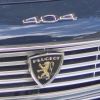As someone who sells tyres there is a LOT of fallacy in all of this.
EV tyres are generally far more load rated as the the things are so heavy. Very important. Speed rating not so much. Though most remotely performance tyres are V [140mph]rated. H [125mph] is an old rating, still very relevant but after all apart from the Autobahns most countries only allow us to do 110kmh. Mmany tyres are W rated these days. I have seen Y and ZR rated ones as well.
Profile?? A lot of crap about that. The lower the profile the worse the ride, the more tyre noise and more damage to the vehicle and the wheels. . And generally more drag as well. Doesnt matter what brand, super expensive Euro tyres or elcheapo China tyres. High price does not make a better tyre. More expensive tyres SHOULD be better though frequently are NOT. Better than the budget tyre yes, better than a medium price tyre often not.
Generally accepted that 18" is about the practical limit in rim size. 35 or 40 profile. Bigger is wanker stuff. That includes OEM. Aussie Top Gear proved that, the 19s 20s etc had less grip and far poorer ride. I guess there maybe exceptions. Have seen no end of damaged tyres and vehicles with the bigger stuff. Some people only care about LOOK.
Personal experience. My 14 FG Falcon traytop came with very knackered OEM 16 LT tyres. Needed alloys to dress it up a bit. I found a set of factory 17s, fitted brand new correct to compliance 17" tyres. First time I loaded it with less than a 1000km. Max 3/4 of a ton so in the load parameters. 0lb in the tyres and they literally looked flat. Found some air [not easy in a small country town on a Sunday] inflated them to 45lb and was fine on the way back. 200k trip. Got back off the highway and the rears were quite warm and were near 55psi. SO I removed the wheels and sold them on and fitted 16s with correct load LT tyres to OEM. No more issues. Far safer loaded as well.
A friend tried to tow a racecar intersate with his Ford with factory 18s. Very luckily he had a full size spare [another major issue] as the trad delaminated. He had 40lb in them which is factory setting, more may have been better. Fairly new premium brand tyres on a fairly new car.
SWo when you try to carry a family, the dog and a boot full of goods and chattels remember all this and fit the smalles size wheels the OEM recomends. Never the wankmaster look at me junk.
I see expensive tyres coming off, so often lumpy and weird wear patterns. Use possibly, some have gone very noisy the reason they are being removed. Plenty of tread but not good on a better quality car. I have never removed a modern Michelin without the beads tearing either being removed or refitted. As you do for a proper puncture repair. Which plugs never are. Some people have luck fitting them, not me! I put a proper patch on the inside. Some people dont want a patch,, buy a new tyre. No choice! Tyres will puncture, especially around road or building construction. TEK screws a very common culprit. Or bolts. This is where people realise that a $200 tyre is better than a $1000 one
Cheaper tyres? Peole waffle about getting 40000 km from a tyre and a cheaper one only gets 30k. True. The cheaper tyre is literally half the money. So for the same money you can get 60k. Think about it! And there will never be anything like a new tyre. As they wear they never drive as nice. Whatever brand and many get decidedly noisy as well.
Grip? Many waffle about more grip,, even with graphs with different brands. Some may well be true. But grip is subjective. A tyre good in the rain is often poor in the dry. Or vice versa. And varies from model to model.
Rotation? So many waffle crap about rotating tyres. Never do it. Even every 5000km. A front tyres wears as a front tyre, ditto as a rear. A rear on the front will tramtrack and follow the patches on the road. A front tyre on the rear [on RWD cars] will never have the same grip. This is simple physics. And with at least 10000km service intervals these days the tyres will be very grumpy out of place.
Rims,,,, forged rims are generally better as well as can be lighter. Though THINK. A wheel will be thinner to be lighter. Forging increases density = heavier.
Most OEM wheels are cast. Various methods all with their own issues. Some are far better than others. A good wheel has some maleability, others are very hard and crack easier.
Most OEM manufactures also make aftermarket wheels. In some cases the same wheel finished differently. For well less than half the price. Both OEM and dealers fit aftermarket on new cars, and have done for over 50 years here in Oz.
Here in South Oz we had numerous manufacturers At least 7/8 brands 40 years ago. Now NONE. The last ROH still make wheels but in the Philipines the rest buy from 'their' factories generally in Asia. China, Thailand, Taiwan and Korea and a bit from Vietnam that I know of.
I have seen quite a lot, most are ok, some are poor and I avoid them where possible. Usually the cheapest and to me at least the ugliest!
Some have mentioned US tyres,, in my experience the Yanks could NEVER manufacture decent tyres. The best of a bad bunch are probably Goodrich. At least in 4wd tyres which are fairly good. American tyres though [on US made cars OEM] have killed plenty. 70s Wankmaster GT bias belt crap. Like a dog on wet lino. Radials while better are still square should to be W I D E and drive like crap and wear funny as well. I used to get some dreadfull US tyres, very wide, impossible to inflate round. I hated selling them but the demand was there. Now Nankang, fit, inflate, balance. Easy and so much better to drive on.
GM in Australia perpetuated that. Monaros and Torana sporty models. Square shoulder bias belt **** tyres!! Try winning Bathurst on those,,,, The smart people had them removed and radials fitted before they left the dealer. In those days Michelin ZX. Far better but not a blingy! Bruce Mcphee won Bathurst on those. In 68! By 71/72 all those cars had better radials.
Ford and Chrysler were better with their performance models with radials fitted. Performance radials?? Maybe not but still better.By 75 most OEM tyres were radials though GMH never got there until about 77,,, with Radial Tuned Suspension.






















